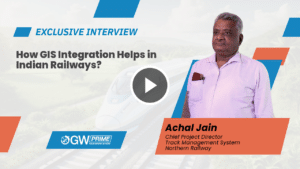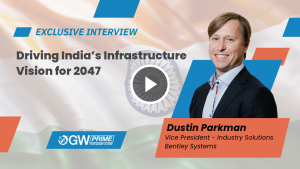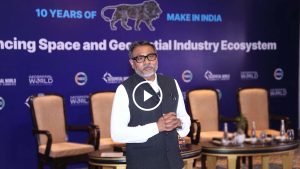Department of Science and Technology (DST), the nodal department of Government of India for organizing, coordinating, promoting activities and formulating policies related to science and technology, organized a two-days conference on “Geospatial Policy for National Development” today.
The conference was aimed to further the discussions on recently notified “National Geospatial Policy” (NGP) 2022 guidelines. The NGP guidelines aim to strengthen the country’s geospatial data and develop a national framework to use the data for improving citizen services.
Addressing the conference, Union Minister, Dr. Jitendra Singh said, “Geospatial technology is going to be an instrument of change in 21st Century India as apart from huge revenue generation potential, it will also open huge employment opportunities.” He said, as per an industry estimate, Indian Geospatial economy is expected to rise over 10 lakhs by 2025.
“In line with the vision of Prime Minister, Narendra Modi, India is on the cusp of Geospatial Revolution and a healthy synergy among Government, Industry and Scientific Community will tremendously boost up economic output and would help India becoming a 10 trillion Dollar Economy by 2030,” added he.
Strengthening Geospatial Infrastructure
Secretary, Ministry of Science and Technology, Dr. S. Chandrasekhar said in his address that the Survey of India (SoI) will provide the baseline for collection and collation of Data by the private sector for strengthening the Geospatial Infrastructure. He expressed that in coming years more Start-Ups will mushroom in this sector, thus opening floodgates of job opportunities. He also underlined that in the next 10 years this sector will be a boomer.
Secretary, Department of Space, Dr. S. Somanath said that with New Generation taking over, Geospatial will be an important arm for converting India into Digital India in various sectors. He further added that after Space and Drone policies, Geospatial will help in Grand Realization of Transforming India into a Digital Economy.
Sunil Kumar, Joint Secretary in Ministry of Science and Technology in his welcome address said, “Geospatial technology has applications in almost every domain of the economy ranging from agriculture to industries, development of urban or rural infrastructure, administration of land, economic activities of banking and finance, resources, mining, water, disaster management, social planning, delivery services, etc. Geospatial data is now widely accepted as a critical national infrastructure and information resource with proven societal, economic, and environmental value that enables government systems and services, and sustainable national development initiatives, to be integrated using location as a common reference frame.”
Private players’ perspective
BVR Mohan Reddy, Founder, Cyient & Member, GDPDC, voiced the thoughts of private players on the NGP. He said, “The NGP has very clearly laid down the milestones which are very definitive. The industry believes that these are pragmatic thought goals. There has been an impetus on usage of drones, aircrafts, satellites which is also very much appreciative.”
The private sector believes that NGP emphasizes on enabling ecosystem, innovation capacity building, startups, and ease of doing business. Reddy shared that the next concern lies with the capacity building in terms of skilled manpower across all levels of the pyramid.









